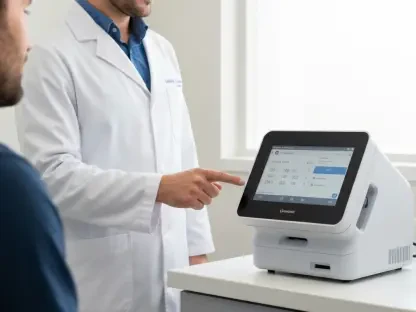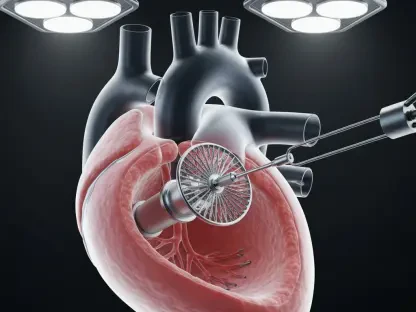Comprehending the intricacies and consequences of breast density is vital for women’s health, especially when considering breast cancer risks and detection methods. This piece investigates the meaning of having dense breasts, providing essential detection strategies based on the expertise of Dr. Alison Chetlen, a renowned figure in breast imaging radiology. As breast density affects a significant proportion of women, understanding the implications is crucial for proactive health management.
Unveiling Breast Density
What Are Dense Breasts?
Dense breasts are characterized by a higher content of fibroglandular tissue relative to fatty tissue, a condition prevalent among women in middle to older age groups. This aspect of breast health cannot be identified through external examination, necessitating the use of imaging techniques like mammograms. Mammograms serve as a critical tool in women’s health, particularly after the age of 40, providing insights into breast composition that are invisible to the naked eye. In dense breasts, the mammographic images reveal substantial fibroglandular tissue which, although normal, poses unique detection challenges even to skilled radiologists. Crucially, density levels don’t necessarily correlate with breast size or firmness. Women might discover dense composition only when they undergo mammogram screenings, an essential routine for uncovering this hidden aspect of breast health.
Genetic Factors and Prevalence
The prevalence of breast density, affecting 40% of women between ages 40 to 74, largely stems from genetic predispositions. Genetics plays a pivotal role, influencing not only physical traits but also underlying tissue composition. Understanding one’s genetic makeup can provide insights into their breast health, although lifestyle and hormonal factors can also impact density levels. Regular mammography screening remains vital for accurate assessment, offering a clear picture of breast tissue and alerting healthcare providers to any anomalies that might necessitate further examination. While genetic factors are often immutable, awareness enables individuals to engage more effectively with healthcare advice, ensuring a proactive stance in managing their breast health.
The Challenges of Detection
The Masking Effect
Dense breast tissue poses a unique problem during mammographic examinations as it appears similarly white as potentially cancerous masses, leading to a “masking effect.” This phenomenon complicates the detection process as distinguishing between normal fibroglandular tissue and malignant growth becomes harder. The metaphor of finding “a snowball in a snowstorm” aptly describes this significant challenge, reflecting on the ongoing obstacles faced by radiologists in detecting early malignancies in such dense environments. Advanced imaging technologies strive to overcome these hurdles, yet the persistence of this masking effect necessitates the use of supplementary diagnostic tools. Recognizing and understanding this effect is essential for both healthcare professionals and patients in shaping effective detection strategies.
Heightened Cancer Risk
Women with dense breasts encounter a significantly increased risk, estimated at four to six times higher for developing breast cancer, compared to those with lower density. Statistical analyses underscore that more than 70% of breast cancers manifest within dense tissues, underscoring the critical need for vigilant monitoring in these populations. Furthermore, mammograms may fail to identify up to 50% of cancers in women with extremely dense breasts, highlighting a severe potential oversight if additional screening methods are not considered. These alarming statistics underscore an overarching message: awareness and enhanced detection play pivotal roles in ensuring better health outcomes. Each missed detection represents not only a potential health threat but also an opportunity for medical intervention that can significantly improve prognosis and reduce the necessity for aggressive treatments.
Initiatives and Solutions
Legislative and FDA Interventions
As part of an important initiative, the FDA has mandated that mammogram reports include information on breast density, effective since September of this year, marking a significant step toward informed health management. This regulatory requirement reflects growing recognition of the importance of transparency in medical reports and aims to foster informed dialogue between patients and healthcare providers. Additionally, various state laws have preceded this federal intervention, emphasizing the critical need to enhance patient awareness surrounding breast density. By integrating density notifications into standard mammographic reports, women are better informed, allowing them to engage in proactive discussions with their healthcare providers about potential screening strategies, particularly those with an elevated cancer risk associated with high-density tissue.
Empowerment Through Knowledge
Empowering women with knowledge about their breast density creates opportunities for informed health decisions that can significantly impact outcomes. Experts like Dr. Chetlen advocate for comprehensive education on the subject as an initial step towards improved health initiatives. When patients are informed about their breast density, they are better equipped to discuss and understand the benefits and limitations of different screening options. Such empowerment extends beyond individual knowledge, promoting a broader cultural shift toward personalized medicine. This proactive approach aligns with a movement in healthcare towards tailored care plans that reflect the unique needs and circumstances of each patient, ensuring that diagnostic processes and treatment strategies are effectively attuned to specific health profiles.
Supplementary Screening Options
Automated Whole Breast Ultrasound
In addressing the unique screening needs of women with dense breasts, the automated whole breast ultrasound represents a significant advancement. This technology provides a 3D image of breast tissue using sound waves, complementing traditional mammography and notably enhancing detection rates. Not only does it offer a broader view than standard two-dimensional ultrasounds, but it also improves cancer detection by approximately 35.7% when combined with mammography. This improvement is crucial, given the masking effect that dense tissue creates in standard mammograms. As a supplementary tool, it assists in locating potential abnormalities that might be invisible on mammograms alone, making it an invaluable resource in comprehensive breast cancer screening protocols.
Breast MRI for High-Risk Individuals
Breast MRI stands out as a robust screening tool for women at a significantly heightened risk of breast cancer, often determined by genetic factors or personal health history. Its exceptional imaging capabilities enable the identification of subtle abnormalities, offering detailed insights that other imaging methods might miss. For patients with a family history or genetic predisposition, MRI screenings provide an added layer of precaution, representing the forefront of technological diagnostic advancements in breast health. This method surpasses the limitations of density-induced masking, offering a clearer pathway for early intervention. In the broader context of preventive health strategies, MRIs play a crucial role in pinpointing early-stage cancers, effectively facilitating timely treatment and tailoring cancer prevention approaches.
Collaborative Health Strategies
Patient and Clinician Communication
Effective communication between patients and healthcare providers remains a cornerstone of developing tailored screening strategies, particularly for women with dense breasts. This collaborative approach encourages informed conversations about health risks and screening options, ensuring that patients receive care that aligns with their individual needs. By fostering a dialogue, clinicians and patients can collaboratively explore diagnostic options, co-creating strategies that not only respond to the unique challenges posed by dense breast tissue but also leverage the latest technological advancements to optimize outcomes. This partnership aids in navigating the complexities of breast density-related screening, providing a framework for shared decision-making that embodies a patient-centered care approach.
Early Detection Benefits
Understanding the complexities and consequences of breast density is crucial for women’s health, especially regarding breast cancer risks and screening methods. Breast density refers to the amount of fibrous or glandular tissue compared to fatty tissue in the breast. Women with dense breasts have more fibrous tissue, which can make it harder for mammograms to detect cancer, ultimately impacting early detection. Dense breast tissue appears white on a mammogram, the same color as tumors, which poses challenges for radiologists in identifying potential issues. Given this, exploring adequate detection strategies becomes essential, and techniques like ultrasound or MRI are often recommended for clearer results. Dr. Alison Chetlen, an authority in breast imaging radiology, highlights the importance of being informed about breast density. With breast density affecting a notable percentage of women, grasping its implications is critical for effective health management, enabling a proactive approach in addressing potential risks.









